How designer mezuzah covers and Torah pointers are putting the ‘Jew’ into ‘Jumanji’
For Lisa Van Allsburg and her husband Chris, Judaica is a family affair
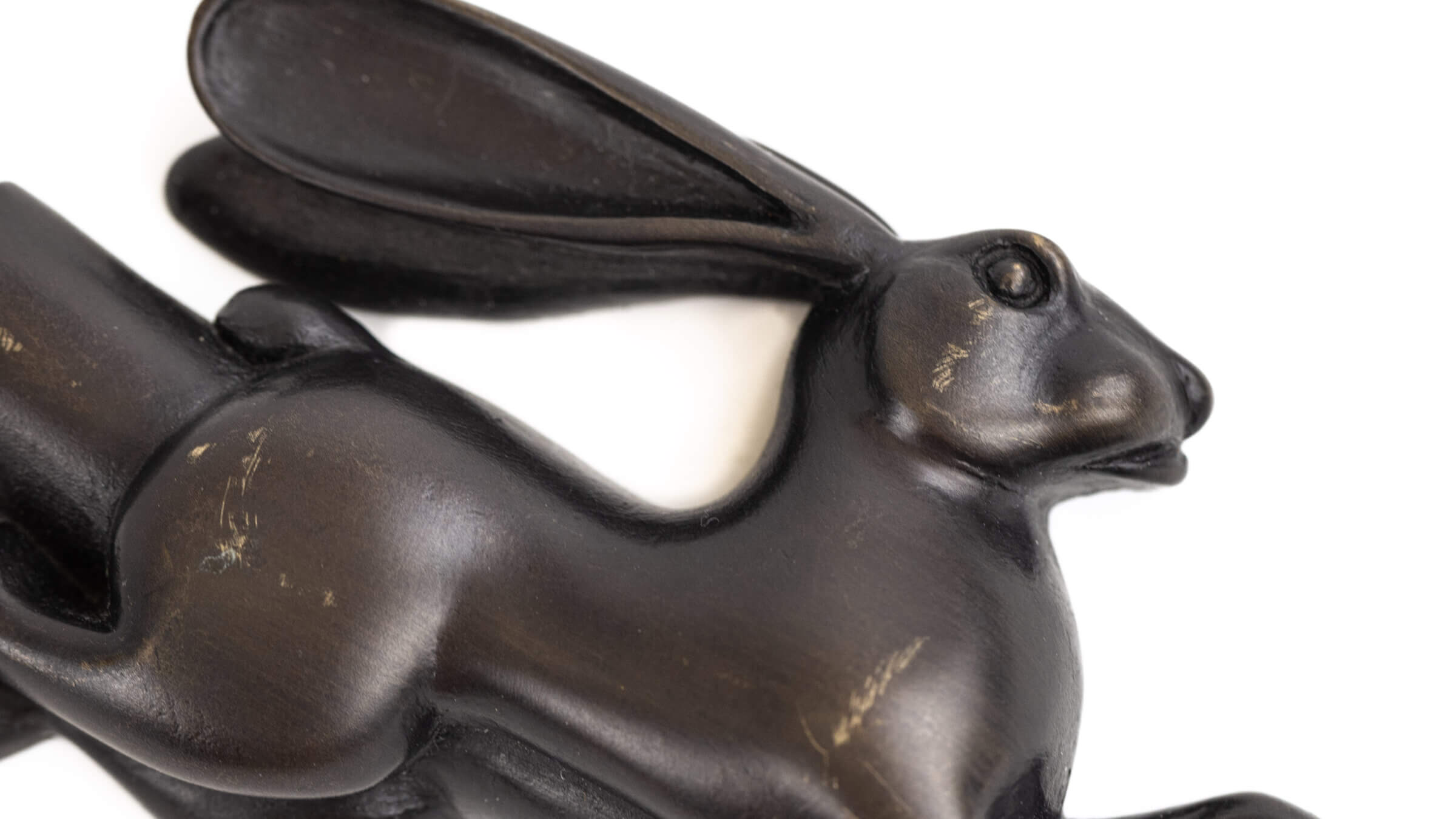
Z’ev Wolf Meir’s, ‘Der Hare Mezuzah Cover’ Courtesy of Forgotten Judaica
Jumanji, Zathura, and The Polar Express don’t exactly scream Jewish culture.
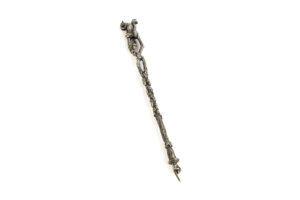
Written and illustrated by two-time Caldecott Medal recipient Chris Van Allsburg, all three children’s books have been adapted into major Hollywood productions. In particular, The Polar Express (and its 2004 film adaptation helmed by Robert Zemeckis) is widely regarded as a perennial fixture of the Christmas season. But one thing that is not as well known about Van Allsburg is that, for the last 17 years, he and his wife, Lisa Van Allsburg, have worked to recapture a bygone era of ceremonial Jewish artifacts through Forgotten Judaica.
“[Chris] didn’t grow up Jewish,” said Lisa Van Allsburg (née Morrison), who co-founded the small, Rhode Island-based business venture alongside her two siblings, Laura and David, in 2007. “He converted when we got married and he takes those rituals very seriously.”
Lisa, on the other hand, grew up in a proud Jewish home heavily centered around cultural tradition.“Shabbos, a great challah bread, the kiddush cup, and all the holidays mattered,” she recalled. “My parents weren’t terrifically wealthy, they didn’t have sterling plates. They just had basic Judaica that you would buy in a synagogue gift store.”
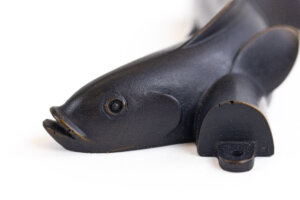
As adults, she, Laura, and David established the annual tradition of taking extended trips to Europe, “for 10 days, every year, just the three of us,” Lisa said. During these vacations to England, Italy, and Poland, the trio made a habit of visiting the historic synagogues constructed by pre-World War II Jewry.
What struck Lisa most was not only the hand-crafted beauty of the pieces on display at the various synagogues, but also the meaning behind them. “Everything was symbolic,” she said, citing as an example the image of a Torah yad (pointer) topped with a squirrel clutching an acorn. “The squirrel is cherishing the Torah.”
The Jewish Museum in New York, which is one of Forgotten Judaica’s regular customers, adds further insight on the matter, indicating that “Small animals, such as squirrels, were often seen in some of the earliest illustrations of Jewish manuscripts.” The squirrel motif would later be replicated in a Forgotten Judaica mezuzah cover and Torah pointer.
“Everything was a story, and I completely loved it because I grew up with stories,” said Lisa, who received design and art education degrees from the University of Michigan (where she met Chris) and the Rhode Island School of Design. “I grew up with Isaac Bashevis Singer, the Wise Men of Chelm. That was what my religion was to me — stories and music and holidays.”
Despite their old-world charm and refinement, these objects carried a tragic reminder of how much culture was intentionally destroyed during the Holocaust. “The Nazis needed metal to create armaments and bullets,” Lisa Van Allsburg said. “They would take menorahs and turn those in for currency if they were sterling. But they would also just melt everything down. They didn’t want any memories of it — most of the Judaica that I saw in Europe was remnants.”
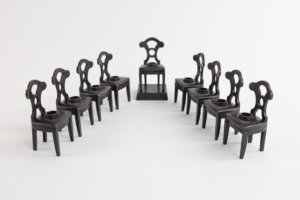
Her path forward was clear: “I said, ‘I want to bring this back. No one ever sees these kinds of things,’” she told me. Using a generous inheritance from a late aunt, Lisa and her siblings resurrected the lost art of ritual objects — Torah yads, mezuzah cases, kiddush cups, Shabbat candle holders, Havdalah spice boxes, Rosh Hashanah honey spoons and so on. “I’m interested in engaging families, children especially, in these rituals, and wanting to be around these objects and know these stories.”.
In bringing the endeavor to life, Lisa Van Allsburg surrounded herself with a top-notch team, including mold makers, model makers, and a number of teachers from the Rhode Island School of Design. Most of them aren’t Jewish, but “they don’t have to be,” she said. “Artists want to do it and love the idea of it.” She also consulted a rabbi to make sure that there were religious justifications for the animals that were being incorporated into the ritual objects.
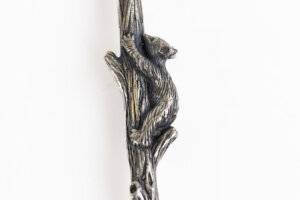
Lisa’s husband Chris — “a beautiful model maker himself,” she said — was tasked with designing mezuzahs based on a pair of traditional Jewish animals: a lion and a ram, which were just the sort of wild creatures that populated Jumanji.
While $190 for a mezuzah case, $450 for a menorah, and upwards of $500 for a seder plate may seem like steep asking prices, Lisa Van Allsburg says she won’t cut costs by outsourcing production. “We do it as it should be done,” she said. “There was a time when I thought, ‘Well, maybe I’ll send it to another country and we’ll be able to give it to people at a better cost.’ But in the end, I could never have the manufacturer somewhere else because there’s no control. It didn’t seem the right way to go.”
“I have never had a profitable year,” she said. “The work is very precise. We hallmark everything. If we don’t like the way something looks cast, then we just melt it again and do it another time. We’re very particular about how things look because we want someone to hand them down to the next generation.”
The overall goal, she said, is to fulfill hiddur mitzvah, the tradition of enhancing religious practice via aesthetically pleasing objects. “My whole mission in life is that Jewish people, or people that love these things, should be able to have beautiful things, to observe with beauty. I continue to sell them and will until I can’t anymore.”
















